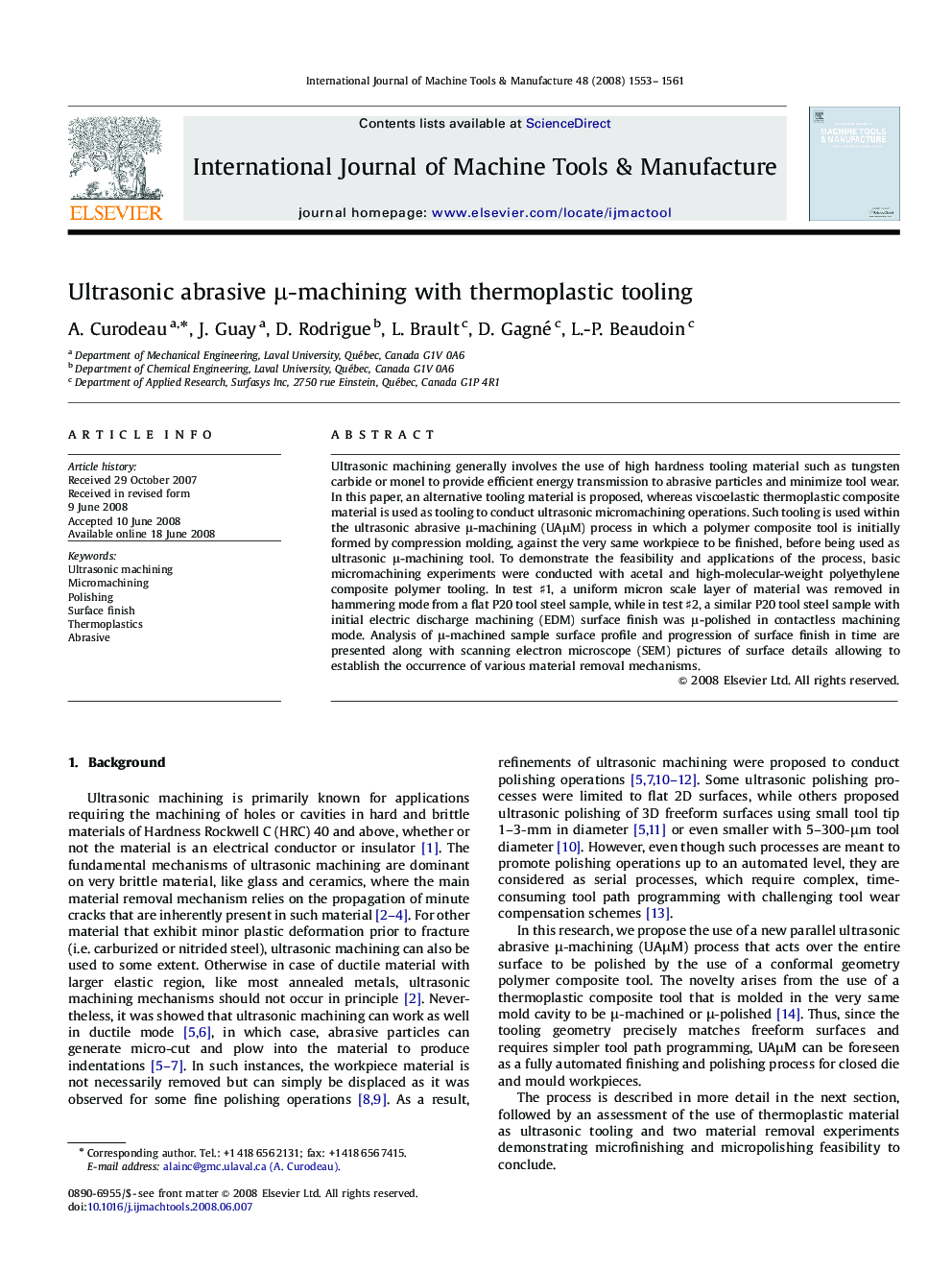| Article ID | Journal | Published Year | Pages | File Type |
|---|---|---|---|---|
| 781037 | International Journal of Machine Tools and Manufacture | 2008 | 9 Pages |
Ultrasonic machining generally involves the use of high hardness tooling material such as tungsten carbide or monel to provide efficient energy transmission to abrasive particles and minimize tool wear. In this paper, an alternative tooling material is proposed, whereas viscoelastic thermoplastic composite material is used as tooling to conduct ultrasonic micromachining operations. Such tooling is used within the ultrasonic abrasive μ-machining (UAμM) process in which a polymer composite tool is initially formed by compression molding, against the very same workpiece to be finished, before being used as ultrasonic μ-machining tool. To demonstrate the feasibility and applications of the process, basic micromachining experiments were conducted with acetal and high-molecular-weight polyethylene composite polymer tooling. In test ♯1, a uniform micron scale layer of material was removed in hammering mode from a flat P20 tool steel sample, while in test ♯2, a similar P20 tool steel sample with initial electric discharge machining (EDM) surface finish was μ-polished in contactless machining mode. Analysis of μ-machined sample surface profile and progression of surface finish in time are presented along with scanning electron microscope (SEM) pictures of surface details allowing to establish the occurrence of various material removal mechanisms.
